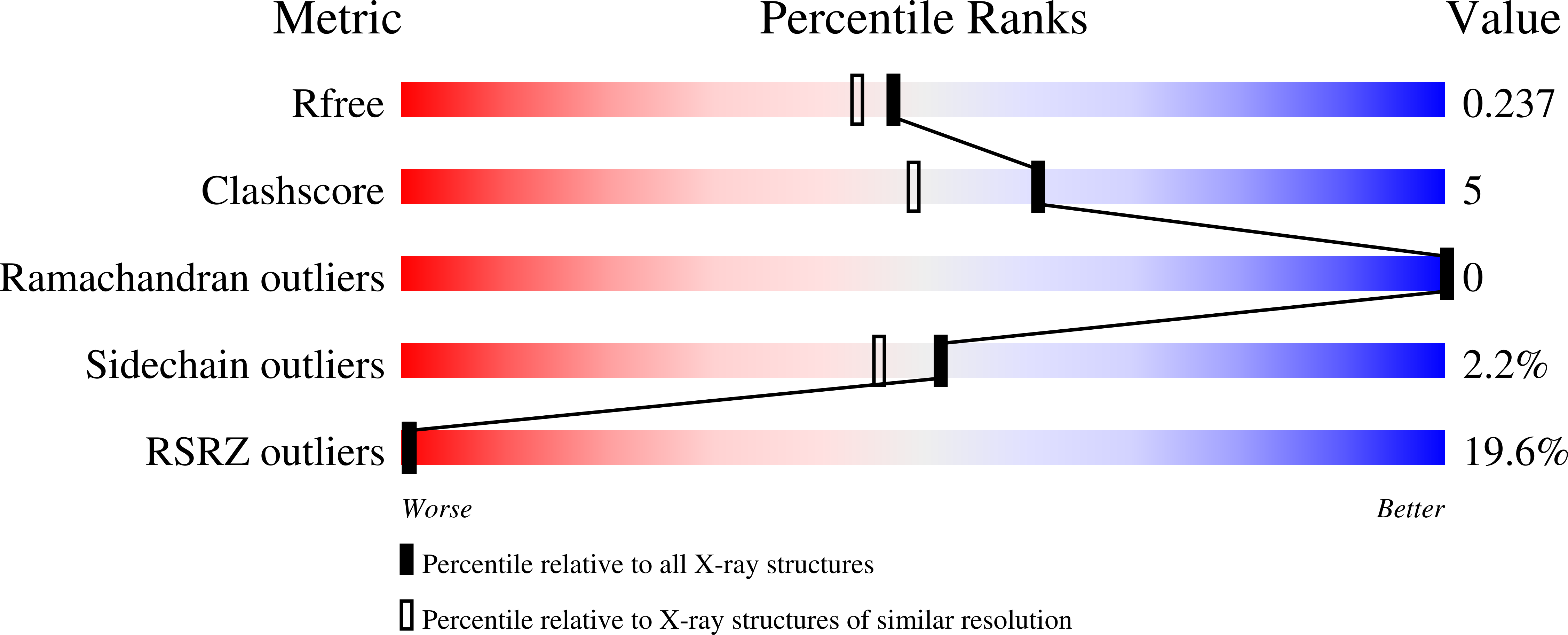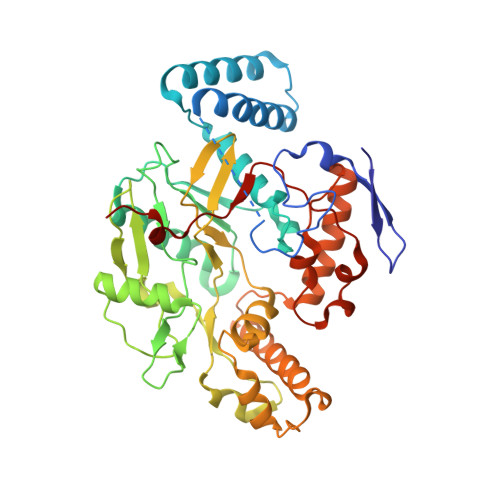Unexpected binding modes of nitric oxide synthase inhibitors effective in the prevention of a cerebral palsy phenotype in an animal model.
Delker, S.L., Ji, H., Li, H., Jamal, J., Fang, J., Xue, F., Silverman, R.B., Poulos, T.L.(2010) J Am Chem Soc 132: 5437-5442
- PubMed: 20337441
- DOI: https://doi.org/10.1021/ja910228a
- Primary Citation of Related Structures:
3JWS, 3JWT, 3JWU, 3JWV, 3JWW, 3JWX, 3JWY, 3JWZ, 3JX0, 3JX1, 3JX2, 3JX3, 3JX4, 3JX5, 3JX6 - PubMed Abstract:
Selective inhibition of the neuronal isoform of nitric oxide synthase NOS (nNOS) has been shown to prevent brain injury and is important for the treatment of various neurodegenerative disorders. However, given the high active site conservation among all three NOS isoforms, the design of selective inhibitors is an extremely challenging problem. Here we present the structural basis for why novel and potent nNOS inhibitors exhibit the highest level of selectivity over eNOS reported so far (approximately 3,800-fold). By using a combination of crystallography, computational methods, and site-directed mutagenesis, we found that inhibitor chirality and an unanticipated structural change of the target enzyme control both the orientation and selectivity of these novel nNOS inhibitors. A new hot spot generated as a result of enzyme elasticity provides important information for the future fragment-based design of selective NOS inhibitors.
Organizational Affiliation:
Department of Molecular Biology and Biochemistry, University of California, Irvine, California 92697-3900, USA.



















